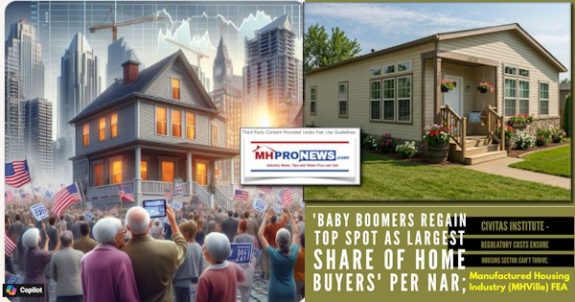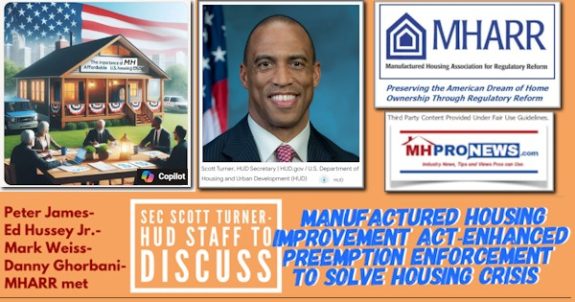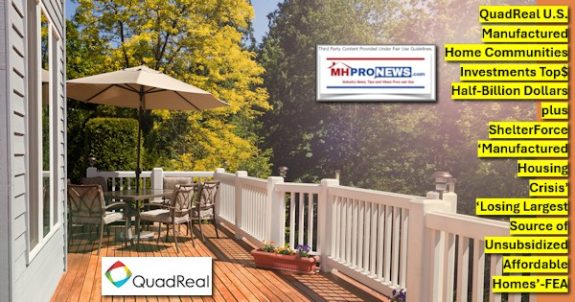Top National News
Homebuilders Remain Upbeat
The National Association of Home Builders’ confidence index was unmoved at 54 for November, the sixth month in a row that the reading has been above the neutral level of 50. Still, the report disappointed industry watchers who had predicted a stronger performance. On top of that, some forward-looking metrics — such as prospective buyer traffic — weakened. The six-month outlook retreated as well but remained favorable.
From “Homebuilders Remain Upbeat”
Investors Business Daily (11/19/13) P. A1
Massachusetts, Other Coastal States Join Mississippi in NFIP Lawsuit
Massachusetts has filed a brief in Mississippi’s lawsuit against the Federal Emergency Management Agency (FEMA) that alleges the agency collected inaccurate data, which was used to establish large rate increases for those in the National Flood Insurance Program (NFIP). Florida, Alabama, South Carolina, and Louisiana are all expected to back Mississippi’s suit against FEMA, which faces a Nov. 18 deadline to file its own brief in the case. Mississippi’s suit, filed by State Insurance Commissioner Mike Chaney, asks the court to require FEMA to complete mandated reports, including an affordability study, before adopting NFIP rate hikes, which took effect Oct. 1st. According to the Massachusetts brief, “FEMA’s failure to consider sufficient data generally prior to making new rates may make its decision arbitrary. To the extent that FEMA’s decision to implement new rates when it did so was arbitrary, FEMA may not proceed with its plan to charge new rates.” The brief also indicated that the actual rates for the flood program are still uncertain because FEMA has not gathered the necessary data to set rates properly.
From “Massachusetts, Other Coastal States Join Mississippi in NFIP Lawsuit”
BestWire (11/15/13) Harman, Thomas
Where to House an Aging Population?
New demands for housing are emerging as the U.S. population grays. Making structural changes to accommodate aging in place, retrofitting existing homes to improve energy efficiency, and building new housing that meets the design preferences of senior buyers are just three of the trends taking shape. In 1980, Census figures show that the population of people aged 65 and older totaled 25.5 million. Thirty years later, that count had mushroomed nearly 58 percent to 40.3 million. Seniors expanded from 11.3 percent to more than 13 percent as a share of the total population during that time span — numbers that are expected to continue rising. By early 2025, the total population aged 65 and older is projected to have increased by more than 60 percent to nearly 65 million individuals. A result of these numbers is a continuing rise of housing oriented toward aging in place. This, in turn, is proving to be an expanding area of business for remodelers. According to the National Association of Home Builders Remodelers, 72 percent of remodelers now perform aging-in-place remodeling. NAHB adds that remodeling for seniors is expected to be the No. 2 business challenge for remodelers during the next five years behind only the availability of skilled labor.
From “Where to House an Aging Population?”
U.S. News & World Report (11/13/13) Dietz, Robert
Industry News
Champion Commercial Structures Building North Dakota Apartments
Champion Home Builders’ commercial arm is building two sorely needed apartment communities in North Dakota’s Bakken oil area, where housing fell into short supply after workers flooded the area. While the initial demand for new housing was generated by out-of-towners who came to work the formation, Champion Commercial Structures President Phyllis Knight says the drive now “is to build out permanent housing for families and key workers such as teachers, emergency workers and other essential people who were having trouble affording the few homes on the market.” She notes that the company’s modular apartments and townhomes in the area will fill that need quickly. Champion Homes marketing executive Kevin Flaherty, meanwhile, notes that any resistance to the 42-unit Wolf Run Village custom townhome development and 144-bedroom Prairie Vista Village apartment project quickly melted away once the new housing began to take shape. “The warmth and comfort that exudes from their appearance is enough to make any block feel like home,” he says.
From “Champion Commercial Structures Building North Dakota Apartments”
Multi-Housing News (10/13) Steele, Jeffrey
Drew Industries Has Earnings Gain
Drew Industries, which supplies components to the manufactured housing and recreational vehicle industries, registered improved financial results for the third quarter. The Elkhart, Ind., firm saw net income soar 52 percent from $9.8 million in the 2012 third quarter to $14.8 million in the current third quarter. Net sales also jumped 11 percent year over year to $251 million. Drew said its third-quarter growth spilled over into last month, too, with net sales climbing 12 percent and industry-wide production of manufactured homes gaining about 5 percent from October of last year.
From “Drew Industries Has Earnings Gain”
Goshen News (Ind.) (11/02/13)
Vt. Affordable Housing Advocates Unveil High-Performance Manufactured Home Design
A pilot project underway in Vermont hopes that a new, high-performance manufactured housing design will offer a way for low- and moderate-income residents to afford energy-efficient living. A total of 10 units, each containing such features as tight insulation and glazed windows, will be constructed under the Vermont Manufactured Housing Innovation Project. They will be 70 percent more energy efficient than the average new manufactured home, according to one estimate. The roughly $100,000 product also will be about $30,000 more expensive than the typical brand-new manufactured home, but the idea is that it will repay buyers over the long term while offering an improved quality of life at once. In addition, that extra $30,000 can be defrayed or even eliminated through a number of subsidies, tax rebates, and other incentives.
From “Vt. Affordable Housing Advocates Unveil High-Performance Manufactured Home Design”
NECN.com (10/23/13) Thurston, Jack
Construction Near Airport Helps Ease Housing Shortage
Avalon Properties, owner of five manufactured communities in three states, has launched a rehabilitation project that could alleviate a housing shortage in the Alamogordo, N.M., area. A total of 10 units that once occupied the property have been removed and replaced with about 100 new manufactured homes, with room to accommodate about 60 more units by the time the community is built out 18 months from now. Avalon is investing an estimated $8.5 million in the “complete revitalization” of Desert Mountain Estates, including new infrastructure and roads in addition to the new housing. “The community provides safe, clean and quiet living for both individuals and families for a very affordable price,” according to Avalon co-owner Corey Donaldson, who said the homes boast energy-efficient appliances, windows, and air conditioning.
From “Construction Near Airport Helps Ease Housing Shortage”
Alamogordo News (11/13/13) Bear, John
First FEMA Manufactured Homes Arrive in Colorado
The Federal Emergency Management Agency early this month welcomed the first of dozens of manufactured homes that it is bringing to the Denver, Colo., area in the wake of historic flooding in September. Qualified residents who were displaced from their own houses will be able to live in the furnished one-, two-, and three-bedroom FEMA homes rent-free for up to 18 months, with the first units ready for occupancy by Nov. 30.
From “First FEMA Manufactured Homes Arrive in Colorado”
9News (CO) (11/04/13)
Meridian Orchestrates $150M Financing Deal for Manufactured Housing Portfolio
Meridian Capital Group LLC arranged $150 million in financing on behalf of Matrix Realty Group, which in turn used the funds to acquire a portfolio of manufactured housing assets from Equity LifeStyle Properties Inc. Matrix paid a total of $165 million for 11 properties in Michigan and Alabama. Together, the communities have more than 5,000 home-sites. Despite the challenging financing climate, Meridian worked out the lending deal in less than one month.
From “Meridian Orchestrates $150M Financing Deal for Manufactured Housing Portfolio”
Commercial Property Executive (10/30/13) Murray, Barbra
MHI News
MHI Financial Services and CFPB Update
Senators Urge CFPB to Provide Relief to Manufactured Housing Market
On November 6th, a bipartisan contingent of Senators urged Consumer Financial Protection Bureau (CFPB) Director Richard Cordray to provide manufactured home lenders with relief from the Dodd-Frank Act High-Cost Mortgage (HCM) triggers.
The letter specifically urges the Bureau to adopt revisions to the HCM triggers proposed by the manufactured housing industry, or alternatively, to delay “applying the high-cost rules that are currently scheduled to take effect onJanuary 1, 2014, to manufactured housing loans” while the Bureau “considers adjustments.”
Signatories to the letter, which was coordinated by Senate Banking Subcommittee Chairman on Financial Institutions and Consumer Protection Sherrod Brown (D-OH), included Sens. Lamar Alexander (R-TN), John Boozman (R-AR), Thad Cochran (R-MS), Bob Corker (R-TN), Joe Donnelly (D-IN), Joe Manchin (D-WV), Mark Pryor (D-AR), Jay Rockefeller (D-WV), Pat Toomey (R-PA), and Roger Wicker (R-MS).
Click here to view the letter. For more information, contact MHI Senior Vice President of Government Affairs at (703) 558-0660 or jboehlert@mfghome.org.
House Members Call for Year-Long Delay in CFPB Mortgage Rules
118 Members of the House of Representatives have urged CFPB Director Richard Cordray to delay the effective date of mortgage finance rules, currently scheduled to go into effect January 2014, for one year until January 2015. The delay would cover HOEPA, appraisal and loan originator guidelines that impact the manufactured housing market.
The bipartisan letter, spearheaded by the Financial Services’ Financial Institutions Subcommittee Chair Shelley Moore Capito (R-WV) indicates that “mortgage rules released in January combined with amendments released in May, July, and September present financial institutions with over 4,000 pages of new regulations that they must be in compliance with by January 2014.”
The letter adds that for many community lending institutions that may have limited compliance capacity, “we urge you to defer implementation of these rules until January 1, 2015 in order to ensure financial institutions are able to transition their systems to be in full compliance with these rules.”
Click here to view the letter.
CFPB Issues New Small Entity Compliance Guide for Ability-to-Repay/QM Rules
The CPFB recently issued an updated Small Entity Compliance Guide for the Ability-to-Repay and Qualified Mortgage Rule to reflect changes from the October 2013 Final Rule. The updated guide clarifies several aspects of the Qualified Mortgage points and fees calculation per the October 2013 Final Rule. Two provisions are also included that clarify the treatment of compensation paid to or by a manufactured home retailer for the purpose of what must be counted as loan originator compensation that is included in the points and fees calculation. Click here to view the guide.
Hill and Housing Groups Call for Scaled Back QRM/Risk Retention Rule
On October 29th, Republican and Democratic leaders of the House Financial Services Committee urged the six regulatory agencies with responsibility for developing new risk retention guidelines to align these standards with the Qualified Mortgage (QM) guidelines developed by the CFPB earlier this year.
The Dodd-Frank Act requires the development of a Qualified Residential Mortgage (QRM) that would exempt mortgages from the law’s five percent risk retention requirements. Last year, the agencies had developed a proposal that would have required mortgages to have a loan-to-value (LTV) of no more than 80 percent.
Many on Capitol Hill had argued against such a requirement. In addition, a broad coalition of housing industry and consumer advocates claimed that such a standard was overly restrictive. In response, the agencies released a revised proposal that would align the QRM standard with the existing QM definition and eliminated a minimum down payment requirement. As part of the Coalition for Sensible Housing Policy, MHI joined with more than 50 other organizations endorsing the agencies’ revised QRM proposal. Click here to view the comments.
Signatories to the letter included the Chairmen and Ranking Members of three House Financial Services’ subcommittees. The letter indicates that “aligning QRM with QM will incentivize the origination and securitization of safer mortgage products and preserve access to affordable credit. It will also lead to a more streamlined regulatory environment, which will benefit all participants in our real estate markets.”
Click here to view the letter.
New Flood Insurance Rates Could Impact Housing Recovery – Provides Impetus for Congressional Action
Last month, a number of new federal flood insurance provisions mandated by the Biggert-Waters Flood Insurance Reform Act of 2012 became effective. The Biggert-Waters Flood Insurance Reform Act extended the federal flood insurance program for five more years, but also provided for a gradual phase out of federal flood insurance subsidies that have kept federal flood insurance premiums artificially low for millions of policyholders.
As of October 1st insurance providers were required to increase premium rates each year by 25 percent until premiums reflect full risk rates. These rate increases will apply to owners of business properties who are currently receiving subsidized flood insurance premiums; owners of severe repetitive loss properties consisting of 1-4 residences with subsidized premiums; and owners of any property that has incurred flood-related damage in which the cumulative amounts of claims payments exceeded the fair market value of such property.
Property owners in flood prone areas throughout the country who have been receiving subsidized flood insurance will now face higher premiums immediately, or over the next several years, or whenever the property is sold. The pending increases in flood coverage will have an adverse impact on property values, and many property owners may be unable to obtain insurance without expensive retrofits to protect against floods. It is estimated that about 600,000 homeowners nationwide will see their rates rise only if they buy new policies or allow their current policies to lapse; but some homeowners are concerned that they may be unable to sell their homes, as premiums could range from $3,000 to $33,000 or much more.
Late last month, legislation was introduced in the House of Representatives and the U.S. Senate that would provide relief from soaring flood insurance premium rates for affected home owners, prevent undue hardship on the recovering housing market, and stop home values from dropping. The Homeowner Flood Insurance Affordability Act would, among other things, prevent premium rate hikes from taking effect for four years and require the Federal Emergency Management Agency (FEMA) to conduct an affordability study and to reimburse those who can prove that its existing flood plain maps are inaccurate.
MHI, and other organizations representing real estate, development, finance and insurance markets, plan to petition FEMA Administrator, Craig Fugate, to convene a National Flood Insurance Summit immediately to bring greater certainty to the implementation of the Biggert-Waters law.
Click here for more information about new federal flood insurance requirements.
HUD Issues Final Rule on New Procedures for Notification and Correction of Manufactured Home Problems
On October 1st, HUD published a final rule revising Subpart I of the Manufactured Home Procedural and Enforcement Regulations. Subpart I sets forth the policies and procedures to be followed by manufacturers, retailers, distributors, State Administrative Agencies (SAAs), primary inspection agencies and HUD in assuring that notifications and corrections of defects and imminent safety hazards in manufactured homes are addressed as required by federal law.
The final rule which becomes effective on March 31, 2014, follows the publication of a February 15, 2011 proposed rule generally supported by MHI. This final rule culminates a decade-long review of the Subpart I regulations by HUD and the Manufactured Housing Consensus Committee (MHCC). It is intended to simplify, clarify, refine and reorder existing rules to clearly identify the respective responsibilities of all parties. The changes to Subpart I regulations contained in the final rule should provide more guidance to the regulated entities as well as the regulators, and minimize ambiguities in the current regulations.
In its 2011 comments on the proposed rule, MHI recommended a number of changes, virtually all of which were adopted by HUD in the final rule. The final rule includes the following MHI recommended changes:
• Maintains the currently codified definition of defect without change.
• Narrows and clarifies language in the proposed rule which provides that IPIAs must review service records for compliance with Subpart I determinations and corrections.
• Provides flexibility in methods of notifying homeowners about defects or imminent safety hazards.
• Clarifies [§3282.406(a)(2)] that a manufacturer, retailer or installer may not be held responsible for problems created by a consumer or purchaser if it is determined through dispute resolution or by any other means that the consumer or purchaser is responsible for the problem.
• Removes subjective words “unforeseeable” and “unreasonable” from §3282.402(b) regarding manufacturers liability and clarifies that manufacturers are not responsible for defects due to consumer abuse or neglect of maintenance.
• Clarifies that when a manufacturer makes a determination of a noncompliance for a minor problem found in one home, it only needs to make a record of its determination. Manufacturer’s investigation requirements have been clarified by indicating that the manufacturer is to include a review of its inspection and service records, IPIA inspection records, and as appropriate to conduct inspections of homes in the class. The subjective term “reasonable” was removed from §3282.404(a)(3).
• Removes requirements for retailers and distributors to retain records of corrections taken to bring a home into compliance with the standards and removes the time period for retention of records. Retailers are still required to retain records under HUD’s Dispute Resolution Program.
• Removes the word “fully” from the provisions in §3282.414(a) regarding replacement of a manufactured home when a manufacturer cannot correct or remove an imminent safety hazard or serious defect from a manufactured home.
• Clarifies how problems should be addressed when manufacturers make a determination that no further action is required, but a problem still exists, i.e. by keeping a record and notifying appropriate parties, or through dispute resolution {§3282.404(a)}.
In the coming weeks, MHI will host a meeting or conference call with IPIAs and other interested parties to discuss the implementation of the new rule. Click here to view a copy of HUD’s final rule.
5,433 New HUD-Code Homes Shipped in September 2013
In September 2013, 5,433 new manufactured homes were shipped, an increase of 24 percent from September 2012. Increases were across the board with shipments of both single-section and multi-section homes up compared with the same month last year. Total floors shipped in September 2013 were 8,224, an increase of 18.5 percent compared with September 2012.
In comparison with 2012, 2013 shipments started with an increase in January followed by declines in the months of February and March. The upward trend resumed in April and has continued through September with increases in shipments every month when compared against 2012. Shipments for the first three quarters of this year totaled 45,189 homes compared with 41,880 homes in 2012, a net increase of 7.9 percent.
The seasonally adjusted annual rate (SAAR) of shipments was 59,771 in September 2013, up 0.7 percent from the adjusted rate of 59,352 in August 2013. The SAAR corrects for normal seasonal variations and projects annual shipments based on the current monthly total.
The number of plants reporting production in September 2013 was 122 and the number of active corporations was 46, both unchanged from the prior month.
Enter the 2014 Land-Lease Community and Retail Sales Center of the Year and Manufactured and Modular Home Design Awards through MHI’s Online Awards System
Click here to enter or view information on the 2014 Land-Lease Community and Retail Sales Center of the Year and Manufactured and Modular Home Design Awards. Through the online system, you can enter the National Industry Awards competition, find eligibility information and submission requirements, view the contest rules, pay entry fees, and upload all of your entry files for judging online. The deadline for submitting entries, paying the fees and submitting materials online for judging is March 12, 2014.
The National Industry Awards are presented each year at the National Congress & Expo for Manufactured and Modular Housing, bringing recognition to the best manufactured home communities and manufactured home retail sales centers in the country and the industry leaders in new manufactured and modular home designs. This year, the Congress & Expo will be held April 29 – May 1, 2014 at Caesars Palace in Las Vegas. Click here for information on the 2014 Congress & Expo. Awards will be presented on Wednesday, April 30th. Each award winner receives a personalized trophy and the entry will be placed in MHI’s online Photo Gallery. Click here to view.
Please note the following membership requirements for entering the competition:
– Manufacturers that enter the Manufactured and Modular Home Design Awards competition must be a member of the Manufactured Housing Institute (MHI).
– Retailers that enter the Retail Sales Center of the Year Award competition must be a member of the state association in the state where the sales center is located.
– Communities that enter the Land-Lease Community of the Year Award competition must be a member of the state association in the state where the community is located.


























